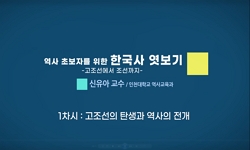Purpose; This study examined the origin of Joseon Yusool and its value as an intangible heritage as a military martial arts from a macro perspective, and the conclusion was drawn as follows. First, the Joseon military is fought against the Japanese en...
http://chineseinput.net/에서 pinyin(병음)방식으로 중국어를 변환할 수 있습니다.
변환된 중국어를 복사하여 사용하시면 됩니다.
- 中文 을 입력하시려면 zhongwen을 입력하시고 space를누르시면됩니다.
- 北京 을 입력하시려면 beijing을 입력하시고 space를 누르시면 됩니다.

The Historical Re-Examination of the Origin of Joseon Yusool as the MILITARY Tactic from Year 1598
한글로보기부가정보
다국어 초록 (Multilingual Abstract)
Purpose; This study examined the origin of Joseon Yusool and its value as an intangible heritage as a military martial arts from a macro perspective, and the conclusion was drawn as follows. First, the Joseon military is fought against the Japanese enemy who wielded swords and rifles during the Seven Years War of Imjinwaeran. It was necessary to use Yudo first to overcome the opponent and to win the war. Second, since the Japanese invasion of Korea, Yudo was born in 1637, and a new war physical techniques were established in the martial arts world of Japan Third, the Imperial School of the Korean Empire was established in April 1895(the 32nd year of Gojong s reign) with the training camp, which was established in May to train and command the beginners. In particular, the Japanese Foreign Ministry record was Yudo, the main feature of the Joseon Military Academy in 1905, and the Joseon Military Officers made Yusool as a part of the martial arts. Fourth, the beginning of the Joseon Yusool Department was by Emperor Gojong, 100 strong men, Wolnam Lee Sang-jae, and Ryu Geun-su and Na Su-yeong, who were from the Gojong Imperial Academy. It was the first Yusool of Na Su-yeong, the Joseon Yusool, and the first blackbelt holder Kim Hong-shik of YMCA Yusool. In other words, Yusool already existed be-fore the introduction of Yudo of the Japanese Gangdogwan to Joseon. It was also called Yusool in the 1914 Min-istry of Physical Education report. In conclusion, it was the noble martialism of the ancestors through the Joseon Yusool, and we should preserve and develop the spirit and intangible cultural heritage.
목차 (Table of Contents)
- 1. Introduction 2. Research Method 3. Historic Implications of the Origin of Yudo and Imjinwaeran 4. The Historical Implications of Joseon Yudo That was Transferred as Japanese Yudo after Imjinwaeran 5. Re-Examination of Modern Joseon Military Yusool and Yudo 6. Historical Implication of Joseon Yusool and Yudo as the Spirit of National Salvation 7. Conclusion 8. References 9. Contribution
- 1. Introduction 2. Research Method 3. Historic Implications of the Origin of Yudo and Imjinwaeran 4. The Historical Implications of Joseon Yudo That was Transferred as Japanese Yudo after Imjinwaeran 5. Re-Examination of Modern Joseon Military Yusool and Yudo 6. Historical Implication of Joseon Yusool and Yudo as the Spirit of National Salvation 7. Conclusion 8. References 9. Contribution
동일학술지(권/호) 다른 논문
-
A Critical Evaluation to Just WAR Theory and Alternative Way
- J-INSTITUTE
- Park Gyun-yeol
- 2020
- KCI등재후보
-
- J-INSTITUTE
- Choi Hwan-suk
- 2020
- KCI등재후보
-
A Case Study on the Core Competencies of MILITARY Leadership for Junior Officers
- J-INSTITUTE
- Park Sang-jung
- 2020
- KCI등재후보
-
The Advent of AI and Its Some Implications to MILITARY AFFAIRS
- J-INSTITUTE
- Yi Li
- 2020
- KCI등재후보




 스콜라
스콜라





